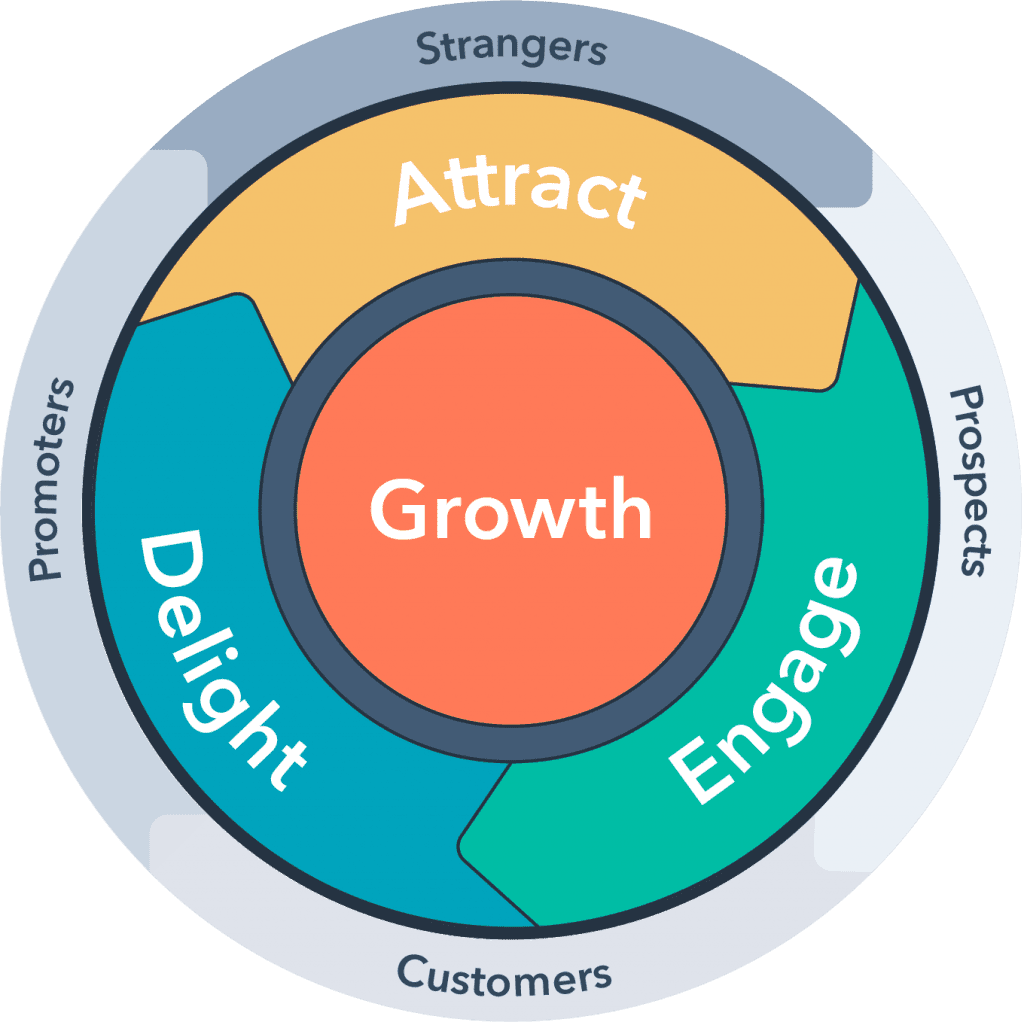RevOps is the new go-to strategy for business operations – Here’s Why.

Focussing on the functionality of your business, the operations & daily efficiencies is something that can often be overlooked in early stages or as a business grows quickly. We know client relationships & service are of utmost importance (which is where most business owners focus sits from day one), however, over time you want to ensure that not only do these relationships remain strong & supported, but that your service process gets stronger – with robust systems in place to enable smooth client journeys at each touchpoint with your business. Our good friends at Modern Visual Business Solutions are experts in this area & we value their advice greatly. They have prepared the below blog detailing RevOps – a new go-to strategy for business operations & we think it’s all pretty darn impressive. Take a look!
As a business, your top priority should be providing the best customer experience, for each and every customer. Your aim will be to build on customer relationships, and make lasting impressions. We know the best way to build relationships is with human interaction. A high-touch strategy is the most common way to achieve this. However, when your business grows, this process becomes time consuming and difficult for your team to manage.
Communication between departments can become less efficient, or, you can lose customers in the transition all together. This creates problems in your customers journey. Moving them through departments, and pushing them through a funnel that is no longer smooth and personalised. This is where Revenue Operations will help scale your business, rather than provide linear growth.
What is RevOps?
Revenue Operations, focuses on the functionality of your business. It Improves revenue growth without unnecessary cost.
Ask yourself:
- How well does your team communicate?
- How smooth is your customer journey? Do you bounce them back and forth between departments?
- Are your processes efficient or time consuming?
- Do you use automation and technology to your advantage?
Revenue operations is the process of assessing all aspects of your Marketing, Sales, and Service departments. It’s a holistic approach, that implements automation and technology, to scale up your business. It focuses on creating unity within each department, and a smooth transition for the customer, at each stage of their customer lifecycle. This strategy increases revenue, without linear growth. As a result, you can invest more into resources and the areas of your business that need it most.
RevOps will:
- Identify weaknesses in your procedures
- Examine use of technology and automations
- Assess your customer journey and eliminate friction
- Implement the Flywheel Model to generate more leads
- Increase revenue without added costs
- Focus on scaling your business over Linear growth
What is the FlyWheel Model?
Used in conjunction with Revenue Operations, is The Flywheel Model. The Flywheel model is a new way of using customers to grow your business. Placing customers at the centre of your attention, encourages a positive long-term relationship. You will no longer lose customers once they reach the final stage of the sales funnel. The Flywheel model pushes customers to become advocates for your brand, and uses word-of-mouth to perpetuate more income in the future.
Who can use RevOps?
Businesses that are ready to scale-up and grow their business through efficiency and technology are ideal for using RevOps. These businesses will have a solid foundation and understanding of their customer needs. Any Business that wants to audit their current operations to improve performance, should implement Revops. You can improve operations both internally and externally, allowing you to completely transform your business for maximum success.
When is the right time to implement RevOps?
If your goals are to identify your weaknesses and improve them, or, increase revenue through adjusting your current strategy without linear growth, it’s time to start using RevOps. Often RevOps can identify solutions to problems you didn’t realise you had. It can also make your current strengths even more successful.
If your business becomes hard to manage, and your processes are failing you, RevOps will help automate tasks, and keep personalisation at a focus. It creates the perfect balance between high-touch and tech-strategies. Focused on data driven analysis, and frees up your time to spend on more important matters.
- Business owners who have difficulty analysing data and managing tools
- When the customer journey isn’t working the way you thought it would
- If your team is not communicating effectively
- Customer journey is not optimized for success
How to implement RevOps in your business
Most companies will hire a RevOps Manager or specialist to assess their business. Having an outside source look inwards, often allows for new ideas and improvements to your business.
To give you an overview of what the process looks like, we’ve put together a few steps you can implement to start using the RevOps strategy straight away.
Step 1: Implement the FlyWheel Model
There are three main stages to this model – Attract, Engage, and Delight.

Source: www.hubspot.com
Attract: The first step is gaining your customers’ attention. Aim to provide valuable content, and be seen as a reputable source for information. Aim to be helpful, don’t sell your soul the first time they meet you. Consumers will not engage if you start selling too early in the process. Eliminate the barriers and provide a path customers will be willing to follow.
Engage: At this stage, focus on the customer experience. Aim to get personal with consumers, yet, keep your processes efficient. Implement automations and technology, that will nurture leads and build relationships. Enable consumers to find your product or service, and become a valued resource. When a prospect does consider your business, don’t complicate their path to purchase.
Delight: This is the final stage, where you can boost your customer into becoming a brand advocate. The aim is to delight consumers, and leverage proactive self service to your advantage. Implement processes that keep consumers captivated with your brand. This is what will drive customer loyalty, high satisfaction rates and increase word of mouth. Get this right, and the momentum created at the delight stage, will push your flywheel to consistently attract new customers.
How do you make this flywheel spin?
In order to move customers through this flywheel you need to implement ‘forces’ and remove ‘friction’. The faster you implement operations, the quicker the flywheel will spin. Ultimately, leading to stronger growth and generating more revenue.
Increasing Forces and Removing Friction
Forces are the elements that drive your business and push customers forward. Determine the strengths of your business, and use them to improve each area of your flywheel. Assess all of your business’s operations, in relation to this flywheel, and implement forces that will make this strategy more effective.
Removing friction is eliminating the barriers that slow down your Flywheel. Analyse your operations and identify the problems your business faces. Determine how you will overcome these issues, to ensure your business operations remain successful.
Step 2: Audit Your Content
- The first stage of the customer journey, is what attracts them to your business. Begin with auditing all of your content, to ensure it matches each stage of the customer’s lifecycle. Adjust anything that does not align with your current strategy and implement solutions where new content is needed.
- Ensure every step of your customer’s journey is trackable, both online and offline. Audit your website’s analytics, assess your conversion rates and identify all of the customer touch points. To successfully engage your audience, ensure their path to purchase is easy and simple to follow.
- If customers become lost at a particular stage of their lifecycle, adjust the strategy and create new solutions for these barriers. Ensure all changes are traceable for future assessment. This step can lead to future revenue growth, as you lose less customers in the Flywheel, and generate more delighted customers in return.
Step 3: Build strong internal connections
- Assess how well your Marketing, Sales and Service departments communicate with each other and their customers. Internal communication is key for ensuring the customer has a smooth transition between departments. The customer experience will suffer if the internal operations are not efficient. The opportunity to optimise on future sales will decrease. This is where automation, tools and software, can boost your internal processes.
- Increase your focus towards inbound marketing, and utilise automation to free up your time. Be mindful to keep personalisation at a focus, as your customers will not appreciate losing human interaction when they need it.
- Assess your current sales funnels and identify where you can make improvements. Often large differences between data sets, presents where the problem lies. However, the real task is working out why it is happening and what you can do to fix it. Ensuring you have accurate and extensive data analytics, is detrimental to the success of the RevOps strategy.
Step 4: Focus on delighting your customers
- Aim to exceed the expectations of every customer that comes into contact with your business. When customers do have a bad experience, or they become ‘lost’, ensure they leave on good terms. Aim to have all matters resolved to the best of your abilities.
- Build on loyalty programs, referrals or implement proactive customer service. Offer customer feedback surveys so you can improve your operations in the future. This will increase satisfaction rates, as you are asking the customer what they want and need.
Step 5: Plan for future success
- Create an ongoing plan that evaluates your Revenue Operations. Organise dashboards that have all of your RevOps data in one place. Monitor your analytics regularly and determine whether your new strategy is on track.
- The RevOps Manager should check in with Marketing, Sales and Service managers frequently. Each team will report to the RevOps manager, who will holistically analyse, what is working and what is not.
- Utilise RevOps data to assess which lifecycle stages have friction, and implement new forces to boost the Flywheel. The faster the Flywheel moves, the more revenue is generated.
Source: Modern Visual Business Solutions.